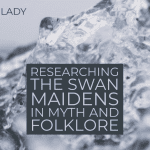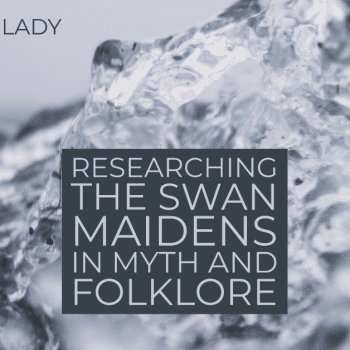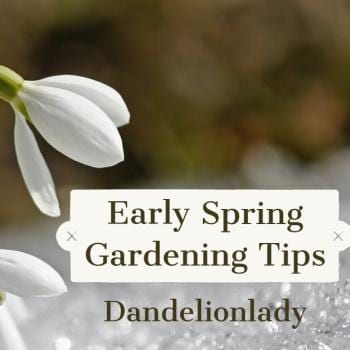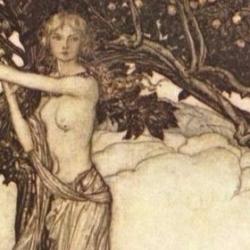With the Norse lore you can’t escape having to consider what the difference is between all the various interlocking female spirits. There are Valkyries, Disir, Nornir and swan maidens. Frankly, you could make an argument for the swans to be involved in all the groups, sort of like those kids in high school who can’t pick just one clique. The English word we use for those large white waterbirds is very similar to the old Norse “svan”. When you start reading the old sagas and lore you find swan maidens and women all over the place. Today I’m focusing on the bird women from the Völundarkviða.
These bird women take many forms, including Freyja herself who is called chooser of the slain, and takes the form of a falcon using her feathered cloak. There’s Svanhild from the Völsunga saga, who is the daughter of Sigurd and Gudrun, and the twin of Sigmund. She is referenced in a number of other Norse sagas, including twice in the Poetic Edda. Valkyries seem to take the form of falcon, ravens, and swans.
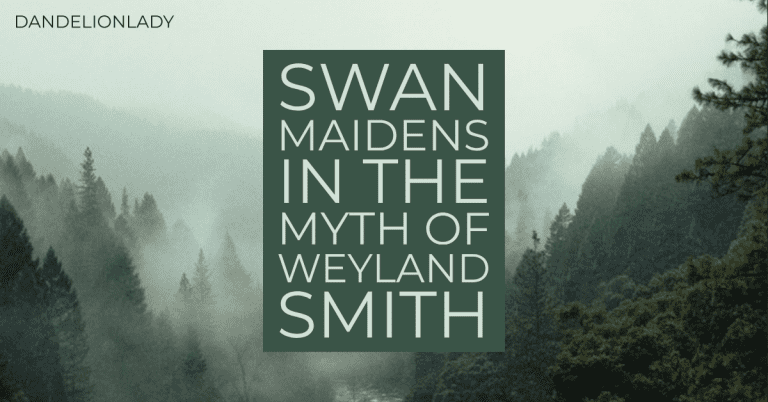
We encounter swan Valkyries in the Völundarkviða which is the story of Weyland Smith. He and his two brothers encounter three Valkyries sisters named Hervör alvitr, Hlaðguðr Svanhvít, and Ölrún. Let’s look at what those names mean, and what that means for Valkyries and swan maidens.
Sister number one: Hlaðguðr Svanhvít who is Volund’s wife. Her first name name roughly translates as Hlaðguðr Hlad(a) + Gunnr: lace/headdress (to weave) + battle or valkyrie. Her second name is easy enough: Swan White. So we might call her Woven-Headdress-Battle-Woman White-Swan. What a name! There’s a lot for us to go on there, and her name clearly resonates the connection between swans and Valkyries. Weaving is an important element as well, and associated with the battle aspect. There are references to Valkyries knotting the enemy to keep them from fighting, so it may be that this is an expression of battle magic using thread.
Sister number two: Ölrún: this sister’s name is probably related to names like Alruna. The prefix Al- or Ol- is debated, but might mean noble. The latter part of the name refers to rune, meaning secret or hidden knowledge and also the name of the alphabetical and magical system discovered by Odin. We can translate her name as Noble-Secret-Knowledge.
Sister number three: Hervör Alvitr: Herr means army and Vor is spring/woman. Alvitr translates as strange creature or all-wise. I love how these translations work, uniting concepts that we as modern English speakers don’t always understand as related. In an attempt to organize the translation I might say her name was something like: Army-of-the-Spring-Woman Strange-and-Wise.
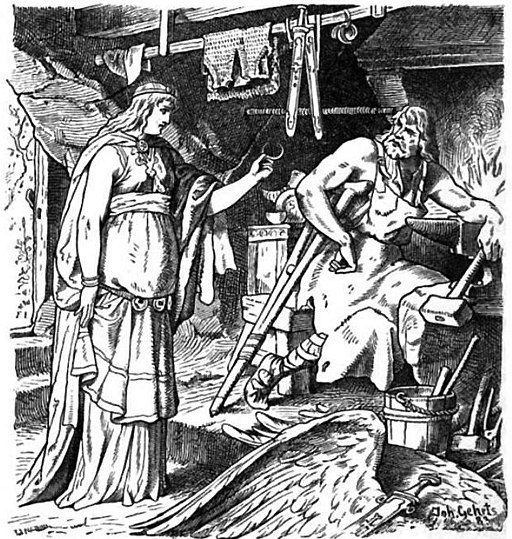
It’s also interesting to note that in this tale, it is the man that is captured, but only after his wife leaves him. In fact, the bit about the wives is the prequel to the main narrative, which is about Volund’s capture where he is forced to make magic smith-crafted items for the king. Volund is referred to as the King of Elves, connecting the swan maidens to the Elves and to the Vanir. When Volund escapes his capture he makes himself a flying device, either described as a robe or created wings. In the standard swan maiden folklore, she is the one who escapes with a feathered garment. In this myth, it is her ex-husband who does so.
We have a number of the classic elements of a swan maiden story here, but rearranged. It’s hard to date the folklore properly, but because it’s so widespread on the Eurasian continent it’s likely to be very old. It is possible that the writers of the Weyland Smith myths were influenced by the folktale, but it’s also possible that the folktale came later. It’s hard to know for sure with such things. However we can see the connections between the otherworldly beings, a garment of winged transformation, and creative inspiration. These are themes that come up many times in the swan motifs.
If you are interested in supporting the various work I do for interlocking pagan communities, please consider signing up over at my Patreon. I would deeply appreciate it.

